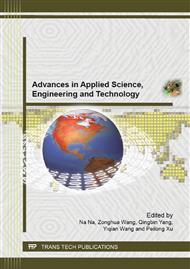p.273
p.281
p.286
p.292
p.297
p.301
p.305
p.309
p.313
Study on Marine Diesel Engine Waste Heat Recovery System with Multi-Stage Flash
Abstract:
As international oil price rise rapidly, the proportion of the fuel cost share of the transport cost has become increasingly high. At the same time, in order to reduce CO2 emission, the meeting of MPEC formulated and adopted the resolution on EEDI, so saving energy and reducing emission has become a marine industry benchmark. In this paper, through the study on marine diesel engine waste heat recovery system with multi-stage flash, establishing the universal model of multi-stage flash unit, and optimizing the parameters of the low-temperature waste heat recovery system with multi-stage flash. This paper constructs the power equation in matrix model, and each matrix of the model has a simple rule to be filled in, which make it versatile, and suitable for computerization, through estimating the power generation and CO2 emission reduction of the system on main diesel engine different loads, analyzing the waste heat recovery system with economic method finally.
Info:
Periodical:
Pages:
297-300
Citation:
Online since:
June 2013
Authors:
Price:
Сopyright:
© 2013 Trans Tech Publications Ltd. All Rights Reserved
Share:
Citation:


